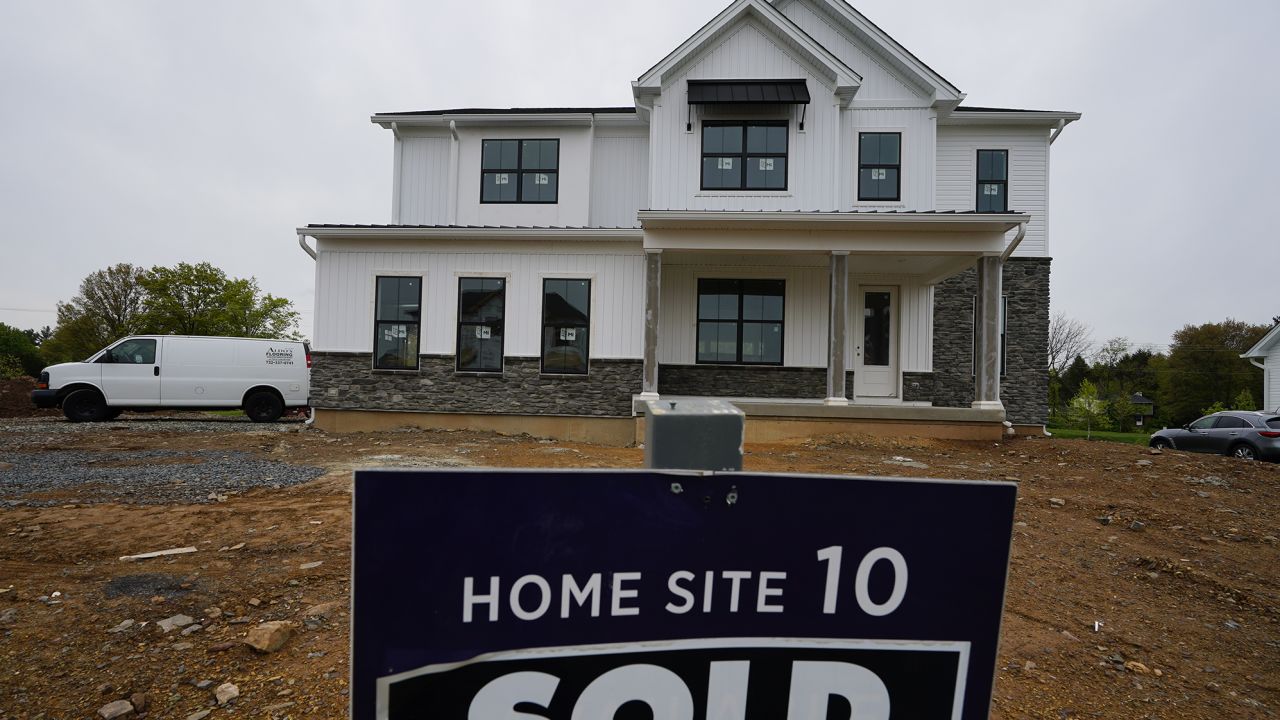begin quote from:
https://www.cnn.com/2023/10/19/opinions/housing-market-mortgage-rates-glock/index.html
Opinion: The perfect storm hitting homebuyers

Editor’s Note: Judge Glock is the director of research and a senior fellow at the Manhattan Institute. He is the author of The Dead Pledge: The Origins of the Mortgage Market and Federal Bailouts, 1913-1939. The views expressed in this commentary are his own. Read more CNN Opinion.
Anyone looking to buy a house knows that this is not a great time. During the pandemic, mortgage rates were at their lowest level in history and housing was cheaper. It took just about 20% of the median family income to pay for a mortgage with 20% down. Today, mortgage interest rates are up — the 30-year fixed rate is currently 7.63% — and so are home prices. Americans need about 35% of their income to pay for a mortgage, which is higher than at the peak of the so-called housing bubble in the early 2000s.

Unfortunately for homebuyers, there is almost no hope that we’ll return to the affordable housing days of 2020. More concerning, there is little indication that recent trends will reverse or that homebuying will get much more affordable in the near future.
The main reason homebuyers are struggling is that the cost of borrowing has gone up for everybody. After a burst of inflation, the Federal Reserve increased interest rates at one of the fastest paces in its history. The Fed has taken its target interest rate from near zero at the beginning of 2022 to almost 5.5% today.
But the Fed’s rates mainly affect short-term borrowing. Even more important for mortgages are long-term interest rates that recently hit peaks.
One of the main reasons for those higher long-term rates is unprecedented levels of federal deficits and debt. This year the federal deficit, excluding the reversal of the government’s student loan forgiveness plan, hit $2 trillion, a level once inconceivable in peacetime. The Fed has also been reducing its holdings of many long-term federal bonds and even mortgage-backed securities backed by the federal government. These trillions of dollars of bonds thrown on the market mean all sorts of borrowers have to compete for funds in a more crowded field, and therefore have to pay higher interest rates to attract investors’ attention.
The markets are expecting the federal government to keep begging for large slugs of extra cash for years, which has helped push 10-year Treasury notes up to over 4.9%, from below 1% just a few years ago. The increased interest rates for federal and other debt have pushed mortgage rates up from less than 3% during the pandemic to 7.63%.
In another world, high mortgage rates might have crashed the housing market and at least reduced prices for new homebuyers. But, according to the Case-Shiller Home Price Index, although housing prices declined a bit after a temporary peak last year, they have started climbing again and even hit new record highs. The median sales price of a house in the middle of this year was about $420,000, almost $100,000 higher than it was before the pandemic and far above its peak in the early 2000s.
The problem is that even though higher interest rates have not reduced home prices, they have stalled homebuilding and new house listings. Due in part to increased financing costs, new housing construction this year will likely be down about 10% from its post-pandemic peak. And few people are putting their houses on the market, since they want to keep their old, lower mortgage rates. The lack of supply is keeping housing prices elevated.
The current situation amounts to a tragedy for new homebuyers. They have few housing options, and the options they do have are at new price peaks and have to be purchased with high-interest mortgages.
There is little sign that the driving forces behind these problems will turn around soon. Inflation is still high, so the Fed doesn’t want to reduce interest rates or start repurchasing bonds in the next few months, which would drive down rates; the federal government will not get its fiscal house in order in the next few years; and there is little indication that homebuilders are ready to significantly ramp up construction again. The Mortgage Bankers Association expects mortgage rates will start coming down within a year, but it has had to keep revising its expectations for rates upwards.
Homebuyers in general should not try to time the market. If we’ve learned anything in the past two decades, it’s that housing prices can go up and down unexpectedly. But for those who don’t have to buy right now, renting should be considered an option. Despite claims to the contrary, homebuying is not always a better financial decision than renting. Since rents have started coming down, a comfortable rental home can be a great alternative when buying is unaffordable.
For those who are looking to buy, the best short-term hope is that economic and financial headwinds start to push home prices down again. Lower prices would allow homebuyers to secure high-interest mortgages now and then hope to refinance when or if rates go down again in the future. It might be slim comfort, but it is one of the few things for which potential homebuyers, including this writer, can hope.

No comments:
Post a Comment